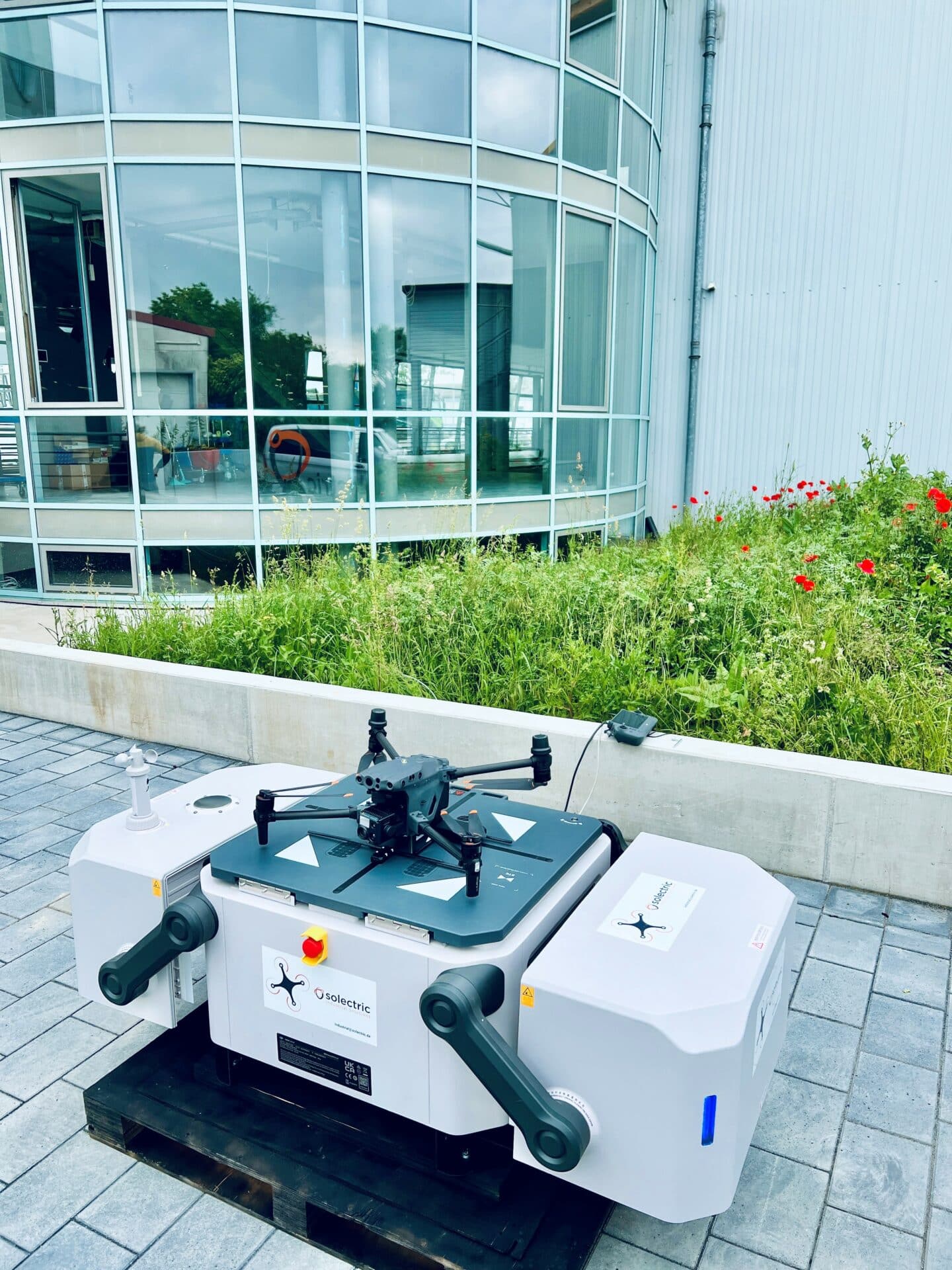The public has not seen this before: We pioneered and performed one of the first fully automated drone flights on the European continent. For this occasion, representatives of print, radio and television as well as online media were cordially invited to join us at the Solectric company premises in Ubstadt-Weiher, Baden-Württemberg. On site, there was ample opportunity for unique photo and film shoots. In addition, the pilots were available for interviews.
What happens!
As DJI’s largest European partner, we presented the robust DJI Dock drone package for the first time. This is one of the first mobile docking stations for autonomously flying drones. The Chinese company DJI is one of the world’s leading manufacturers of camera drones for civilian use.
We are now the first German company to have all the operating licenses for such a fully automated drone flight. In the process, we have worked closely with the German Dynamic Drone Center GmbH (GDDC GmbH).
GDDC GmbH is one of the specialists for the industrial use of drones in the European region. GDDC GmbH also trained and tested our pilots Kevin Dillmann and Volker Wild. Both are now officially allowed to call themselves remote pilots for fully automated drone flights in Europe.
Why is this fully automated drone flight so special?s?
Drones have enjoyed great popularity for some years now, especially among private users. However, industry and public authorities have also long since recognized the advantages of drones. In the industrial sector, drones are already helping to observe large areas or to inspect facilities that are difficult to access.
DJI Dock – a fully automated docking station – is now setting yet another new standard for professional use. The robust box serves as a charging station and landing surface for the integrated Matrice 30 drone.
At 105 kilograms, the DJI Dock is no lightweight, but it can still be easily transported to almost any location where power and Internet are available. The robust docking station works around the clock and functions in both freezing cold and sweltering heat.
Some of the listed performance features are also fulfilled to a certain degree by a human. However, there is one thing that only a fully automated drone can do: it flies to places that a human can only reach at the risk of his or her life, or not at all.
Here are a few valuable examples of regular drone operations:
- Maintenance of wind turbines on the high seas: The German energy transition envisages the massive expansion of wind turbines at sea. There, the turbines are exposed to extreme air and weather conditions. In such an environment, drones are suitable for regular maintenance flights at short intervals.
- Flying fire detectors: Due to climate change, Germany is experiencing longer periods of heat with increasing frequency. As a result, the risk of forest fires is increasing. Drones help the authorities keep an eye on large areas of forest, even in remote regions. This allows fire sources to be detected at an early stage and the risk of large fires to be minimized..
- Observation of glaciers for study purposes: The melting of glaciers in the Alps is another consequence of climate change. Documenting the shrinkage is often difficult. Drones, however, can fly over glaciers and use thermal imaging cameras to provide important information for research.
- Reforestation of new forest areas: Drones are also already helping to plant new trees in some regions. In Australia, the flying sowing assistants are used to spread seeds on fertile soil on a large scale. New forests are now growing there and improving climatic conditions, at least regionally.


